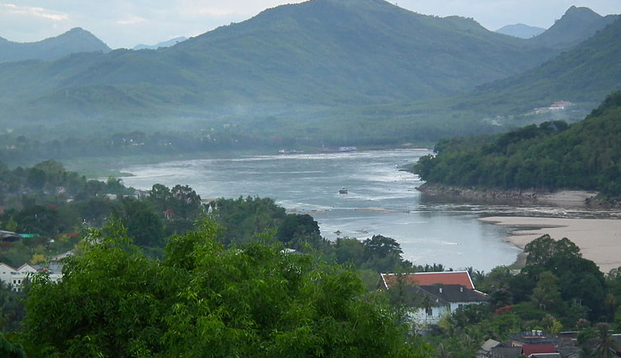Construction has begun on a massive $3.8 billion dam in Laos that will profoundly effect Southeast Asia’s mighty Mekong river. The Xayaburi hydroelectric dam on the Mekong is being supported by Thailand, who have pledged to purchase a good 95% of the electricity the dam could potentially generate.
But the agreement between Thailand and Laos will cause massive changes in the lives of the nearly 60 million people who live near the ecologically rich Mekong – and it’s the poorest Southeast Asians who will be likely be hit the hardest. According to opponents, the dam will wreck havoc with important migratory fish stocks, would block sediment flows integral to agriculture, and could even cause more earthquakes, according to a Vietnamese survey. Further, the silty Mekong might render the dam relatively short lived and ineffective, if it is ultimately constructed.
The Mekong is central in one way or another to every nation in Southeast Asia, with millions depending on its utility as a major transportation network, fishery, and irrigation system. It’s also an incredibly rich ecosystem: the Mekong, which is currently only dammed at its Chinese headwaters, is considered to be one of the most intact riparian systems on the planet.
However, it was only a matter of time before a Southeast Asian nation decided it would be profitable to construct a major dam along its nearly 3,000 mile run, and Laos position at the river’s headwaters has forged its national ambition to become the region’s “battery.” As the Xayaburi dam project’s continuation has made clear, the Lao (in collaboration with the Thais) seem perfectly willing to realize this ambition at great cost to its fellow Mekong River Commission neighbors.
Priorities are key here, and Thai and Lao businessmen and policy-makers stand to gain a lot from the dam and lose relatively little. A relatively small portion of the Mekong runs through Thailand, and it’s potential as a power-source is a lot more important to the Thai leadership then its other potential uses. (The International Rivers NGO, for its part, claims Thailand doesn’t necessarily need the Xayaburi dam’s power to meet its future needs.) It’s indisputable that average Thai and Lao citizens dependent on the river for sustenance will be hurt by the construction of the Xayaburi, but it is also clear that the rights of villagers, farmers, and fisherpeople are rarely high on the agenda in Southeast Asian decision-making.
The rights of Laos and Thailand’s neighbors also aren’t high on the agenda, either. Although the December ruling by the four-nation Mekong River Commission to halt construction on the Xayaburi wasn’t legally binding, Thailand and Laos decision to flout the agreement could potentially place the future of the Commission in jeopardy – and has already drawn the ire of Cambodia, Vietnam, and many regular Thai and Lao citizens.
Cambodia, the poorest nation in the region, probably has the most to lose from the Xayaburi dam. Khmer farmers and villagers depend on predictable Mekong flooding for the proper cultivation of their substinence farms, and they rely on healthy fish stocks for the bulk of the protein in their diet – predictable acts of nature that may soon be wiped out. Although Cambodia has not yet filed suit to stop the construction of the dam, authorities are considering filing a complaint to an international court if Laos isn’t responsive to talks.
Further, the Japanese have a stake in this particular international debate as well: in an bid to counter Chinese influence in Southeast Asia, they’ve agreed to fund extensive studies of the potential effects of the Xayaburi on the Mekong, and in an unrelated move, have pledged over $7 billion to the development of the countries that run through it.
Considering the Mekong’s incredible import to the economies of Cambodia and Vietnam, there’s considerable potential for this debate over the Xayaburi dam to lead to some form of country-on-country strife. Further, the Xayaburi dam’s hasty construction is another disquieting sign that profit and the needs of Southeast Asia’s richest will take precedence over the most basic economic rights of the very poorest.
In a region that’s experiencing a long-awaited period of relative peace, the international community should be keeping an exceptionally close eye on the progress of the Xayaburi Dam.
